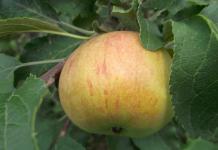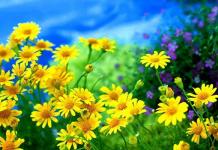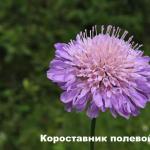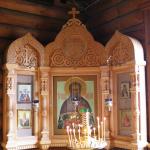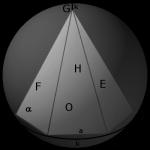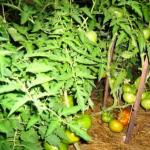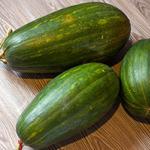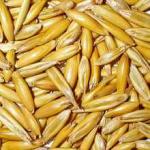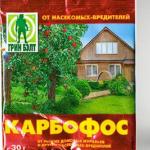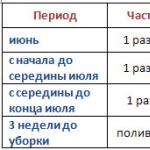In the floodplains of rivers and lakes in spring and summer you can find a wide variety of vegetation: meadow flowers and grasses create a variegated or delicate coloring of earthly clothing. Perennial, biennial, and annual flowers are found in fields and meadows; they reproduce by seeds (self-sowing), roots (vegetatively), and pollination (with the help of birds and insects).
Different geographical zones differ in their characteristics and names of growing herbs, which choose a more comfortable climate for ripening and reproduction. Plants and flowers of fields and meadows can be creeping, low-growing (up to 15 cm), medium and tall light-loving (up to 2 m). Meadow and field plants are bright, delicate, bicolor, variegated, and dark. The predominant colors among them are: yellow, blue, purple, white, pink, red.
Yellow grasses of natural landscapes
 A huge number of aromatic, tart or delicately smelling herbs have yellow inflorescences: goose onion, elecampane, sweet clover, colza, lumbago, navel, lupine, tansy, dandelion and many other useful and beautiful plants. Some yellow meadow flowers, their photos and names are presented in this section.
A huge number of aromatic, tart or delicately smelling herbs have yellow inflorescences: goose onion, elecampane, sweet clover, colza, lumbago, navel, lupine, tansy, dandelion and many other useful and beautiful plants. Some yellow meadow flowers, their photos and names are presented in this section.
Goose onion
 A low-growing plant no higher than 15 cm, it has long leaves growing at the roots, small bright yellow flowers that smell distinctly of honey. Used as a cosmetic and medicinal product.
A low-growing plant no higher than 15 cm, it has long leaves growing at the roots, small bright yellow flowers that smell distinctly of honey. Used as a cosmetic and medicinal product.
Elecampane
 It grows in bushes up to 1 m high. The leaves are narrow, light green, the inflorescences are orange or yellow. Flowers are single or in bunches. Used for face and body care, as well as in folk medicine.
It grows in bushes up to 1 m high. The leaves are narrow, light green, the inflorescences are orange or yellow. Flowers are single or in bunches. Used for face and body care, as well as in folk medicine.
Sweet clover
 Sweet clover is also a yellow wildflower. This is one of the tallest flowers, growing above human height (up to 2 m). The stems are evenly covered with three-fingered leaves. Small flowers (yellow or white) are arranged in racemes.
Sweet clover is also a yellow wildflower. This is one of the tallest flowers, growing above human height (up to 2 m). The stems are evenly covered with three-fingered leaves. Small flowers (yellow or white) are arranged in racemes.
Sweet clover heals wounds, relieves inflammation and cramps, and treats wet cough.
Delphinium
 This bush plant is even taller - up to 1.5 m. The area at the roots is equipped with narrow lancet leaves. The flowers are small, come in different colors, including yellow, and are arranged pyramidally on a long stem. Delphinium is added as a beneficial component in soap production.
This bush plant is even taller - up to 1.5 m. The area at the roots is equipped with narrow lancet leaves. The flowers are small, come in different colors, including yellow, and are arranged pyramidally on a long stem. Delphinium is added as a beneficial component in soap production.
Field plants with yellow inflorescences can continue the above list. These include: zopnik (or fever root), St. John's wort, tansy, spring Adonis, buttercup, sow thistle, goldenrod, rapeseed, mullein, goldenrod, celandine, swimsuit and many others.
Blue wildflowers

The main blue flowers of meadows and fields include: chicory, common aquilegia, gentian, delphinium, field larkspur, lupine, cornflower, peach bell, multicolored pansies with a predominance of blue-violet color, and common bruise. Here are photos of blue wildflowers with names.
Chicory
 It has a powerful, fleshy root filled with milky juice. The stem with multiple branches grows up to 120 cm in height. The leaves grow from the middle part of the stems and are collected in rosettes. The flowers of this meadow plant are blue-blue (there are white and pink varieties), with jagged petals, bordered by leaves, located along the length of the stems and at their tops. Loves the sun, flowers close in the afternoon.
It has a powerful, fleshy root filled with milky juice. The stem with multiple branches grows up to 120 cm in height. The leaves grow from the middle part of the stems and are collected in rosettes. The flowers of this meadow plant are blue-blue (there are white and pink varieties), with jagged petals, bordered by leaves, located along the length of the stems and at their tops. Loves the sun, flowers close in the afternoon.
Chicory is good for the nervous system, heart and blood vessels, kidneys and liver. It is a healing food for animals.
Aquilegia vulgaris
 Bush meadow flowers of medium height (up to 80 cm). They are not afraid of frost. Large inflorescences on tall thin stalks can be of a wide variety of colors: blue, white, red, pink, purple, black, lilac. treat pneumonia, sore throat, skin diseases, wounds and burns, scurvy, headaches and stomach pains.
Bush meadow flowers of medium height (up to 80 cm). They are not afraid of frost. Large inflorescences on tall thin stalks can be of a wide variety of colors: blue, white, red, pink, purple, black, lilac. treat pneumonia, sore throat, skin diseases, wounds and burns, scurvy, headaches and stomach pains.
Gentian
 It is a subshrub with a permanent lower part in the form of bush branches and a replaceable herbaceous top. Reaches a height of 1.5 m. It has memorable flowers in the form of large bells of blue, purple and soft blue color. Gentian root is used for indigestion, gout, eye diseases, anemia, diathesis, and heart failure.
It is a subshrub with a permanent lower part in the form of bush branches and a replaceable herbaceous top. Reaches a height of 1.5 m. It has memorable flowers in the form of large bells of blue, purple and soft blue color. Gentian root is used for indigestion, gout, eye diseases, anemia, diathesis, and heart failure.
Cornflower blue
 Reaches 1 m in height, the leaves are elongated, of a faded green hue. The flowers grow in a basket of beautiful blue color. Used to treat kidneys, urinary tract, cardiovascular system, eye and women's diseases, joints, stomach.
Reaches 1 m in height, the leaves are elongated, of a faded green hue. The flowers grow in a basket of beautiful blue color. Used to treat kidneys, urinary tract, cardiovascular system, eye and women's diseases, joints, stomach.
Purple meadow plants
Althaea officinalis
 A low flower up to 50 cm tall with oblong greenish leaves located along the entire height of the stem: larger at the bottom, gradually smaller at the top. Pale pink flowers grow one at a time and can reach 10 cm in diameter. Althea is not adapted to severe frosts, but feels comfortable in central Russia. The root of the flower is used to treat coughs and stomach ulcers, and improve immunity.
A low flower up to 50 cm tall with oblong greenish leaves located along the entire height of the stem: larger at the bottom, gradually smaller at the top. Pale pink flowers grow one at a time and can reach 10 cm in diameter. Althea is not adapted to severe frosts, but feels comfortable in central Russia. The root of the flower is used to treat coughs and stomach ulcers, and improve immunity.
Valerian officinalis
 Stretches up to 1.5 m in height. The leaves are attached to the stem by a long petiole. Light pink fragrant inflorescences look like umbrellas. In medicine, a drug based on valerian root is used as a sedative for headaches, blood pressure, angina, thyroid diseases, cholelithiasis, problems in the urinary tract, and during menopause in women.
Stretches up to 1.5 m in height. The leaves are attached to the stem by a long petiole. Light pink fragrant inflorescences look like umbrellas. In medicine, a drug based on valerian root is used as a sedative for headaches, blood pressure, angina, thyroid diseases, cholelithiasis, problems in the urinary tract, and during menopause in women.
Fireweed angustifolia

Forest anemone

Wild onion

Explanation of some names
Meadow flowers, in addition to the official Latin name, have a name that was given by people. For example, coltsfoot got its name because of the contrast between the upper (warm, fuzzy) and lower (cold, smooth) parts of the leaf.
Elecampane relieves fatigue and gives “nine strength”. Cornflower is a symbol of purity and holiness, named after St. Basil, who had great love for flowers. Ivan da Marya was named after a legend about an unhappy love that was not destined to come true.
According to Russian legend, multi-colored pansies are the color of hope, surprise and sadness of a girl whose heart could not stand the vain expectation of her beloved. The carnation was named for its resemblance to an ancient forged nail. The roots and leaves of gentian are so bitter that this taste served as the name of the flower.
Photos with the names of wildflowers are given below.
Ivan da Marya

Pansies

Dianthus meadow

Honey flowers
At the height of summer, when the honey-bearing flowers in the field release nectar for cross-pollination, the toiling bees collect this healing sweet liquid for further production of honey.
The most honey-bearing plants are:

Honey-bearing flowers also include: anise, peppermint, lavender, cumin, meadow cornflower, autumn kulbab, lungwort, coltsfoot. Depending on the name of the flower, honey productivity per hectare ranges from 30 to 1300 kg. Below are photos and names of some honey wildflowers.
Nature has generously endowed man with a countless wealth of flora, which heals ailments, delights with its special beauty, cleanses the soul and improves mood.
Video sketch - meadow flowers
Bushy perennial plant up to 2 meters tall. The leaves are round, five-dissected, dark green in color. The flowers are dark purple, large, five-leaved, corolla-shaped, up to 8 cm in diameter. There are many flowers on the shoots. Frost-resistant plant. Used in folk medicine.
Althaea officinalis

Herbaceous perennial plant up to 50 cm in height. The leaves are oblong, pointed, located throughout the stem (large below, small above), bluish-green in color. The flowers are solitary, concentrated at the top of the stem, pale pink, up to 10 centimeters in diameter. The plant cannot withstand severe frosts. Feels good in the Moscow region. Widely used in medicine.
Amaranth spicata

Herbaceous plant up to 1 meter in height. The leaves are alternate, oblong, becoming smaller towards the top of the stem. The flowers are small, yellowish-green, collected in dense spike-shaped inflorescences. It grows in fields and meadows throughout Russia and Ukraine. The plant is unpretentious to climatic conditions. Used in the food industry and medicine.
Pansies

Herbaceous perennial plant up to 40 centimeters in height. The leaves are alternate, bare petioled, becoming smaller towards the top of the stem. The flowers are large, tricolor, tetrahedral, up to 6 centimeters in diameter, on thin stalks. Frost-resistant plant. Grows everywhere. Used in medicine.
Ledum

Bush perennial plant up to 2 meters in height. The leaves are small, located throughout the stem, bluish-green in color. The flowers are four-leafed, crimson in color with a bright intoxicating aroma, up to 4 centimeters in diameter. There are many flowers on the peduncle, they are collected in umbrellas. Grows everywhere. Used in cosmetology and medicine.
Lily leaf bell

Herbaceous perennial plant of the Campanula family up to 1.5 meters in height. The leaves are narrow, dark green, sparse. The flowers are small, arranged in a row along the entire upper part of the stem, and pale purple in color. The plant is widespread in Siberia and also grows in Ukraine. Used in medicine.
Valerian officinalis

Herbaceous perennial plant up to 1.5 meters in height. The upper and lower leaves are long-petiolate, the main stem is sparsely leafy. The flowers are pale pink, fragrant, small, up to 5 millimeters in diameter, collected in umbels. Grows everywhere. Widely used in medicine and cosmetology.
meadow cornflower

Herbaceous perennial weed plant up to 1 meter in height. The leaves are oval-elongated, pubescent, bluish-green. The flowers are pale pink, up to 5 centimeters in diameter, and form a basket in the inflorescence. Grows everywhere. Widely used in traditional and folk medicine.
Cornflower blue

Herbaceous perennial meadow plant up to 1 meter in height. The leaves are pubescent, lanceolate, oval-elongated, bluish-green. The flowers are bright or dark blue, up to 5 centimeters in diameter, in the inflorescence a basket. Grows everywhere. Used in medicine and cosmetology.
Forest anemone

Herbaceous perennial plant up to 20 centimeters in height. The leaves are carved, dark green, located in the root zone of the plant. The flowers are large, white, with a distinct scent of honey. Blooms in warm regions of Russia and Ukraine. Rare protected plant.
Knitting mouse peas

Herbaceous perennial plant up to 1.5 meters in height. The stem is branched, creeping. The leaves are small, compound, ash-green in color. The flowers are small, purple, collected in a corolla. Very popular in the vicinity of Novosibirsk. Used in folk medicine.

Herbaceous perennial dicotyledonous plant up to 40 centimeters in height. Leaves are linear, pubescent. Flowers are red, pink, less often white with five serrated petals. A rare meadow plant protected in the Saratov region.
Meadow geranium

Herbaceous perennial dicotyledonous plant up to 80 centimeters in height. The stem leaves are five-parted, the upper sessile leaves are three-parted. The flowers are large, wide open, numerous, lilac in color with five petals. Grows everywhere. Used as a raw material in medicine.
Snake knotweed

A herbaceous perennial plant with a non-branched single stem up to 1 meter high. Leaves are basal, long, feather-shaped. The inflorescence is spike-shaped, dense, with a large number of small pink flowers. Frost-resistant plant of the regions of Western Siberia. Widely used in medicine and cosmetology.
Pepper Knotweed

Herbaceous perennial plant of the Buckwheat family. Reaches a height of up to 90 centimeters. The stem is thin, branched, erect. The leaves are feather-shaped and located throughout the stem. The flowers are small, white, collected in spike-shaped racemes. Widely used in the food industry, traditional and folk medicine.
Bird's knotweed

Herbaceous plant up to 50 centimeters in height. Stems are branched, twining, creeping. The leaves are small, dark green, located symmetrically along the entire stem. The flowers are small, white, randomly distributed throughout the entire stem of the plant. Grows everywhere. Used in medicine. Used as a fodder plant.
Gentian

Perennial subshrub up to 1.5 meters in height. The stems are dense, short, straight. The leaves are thin, long, dark green, arranged symmetrically along the entire stem. The flowers are large, solitary, bell-shaped. Flowers are blue, light blue or violet. Grows everywhere. Widely used in folk and traditional medicine.
Adonis cuckoo

A herbaceous perennial plant with a straight stem up to 90 centimeters in height. The leaves are lanceolate, arranged symmetrically from top to bottom along the stem. The flowers are pink, collected in a corymbose panicle and concentrated in the upper part of the plant. Grows in most regions of Russia and throughout Ukraine. Widely used in folk and traditional medicine.
Wintergreen

Herbaceous perennial plant up to 40 centimeters in height. The leaves are large, dark green, round-ovate, serrated. The flowers are small, white-pink in color, collected in straight racemes. Frost-resistant plant of the Caucasus, Siberia and the Far East. Medicinal plant used in medicine.
Goose onion

Herbaceous perennial lily bulbous low-growing plant up to 15 centimeters in height. The leaves are long, growing in the root zone as a separate paroxysm. The flowers are small, bright yellow with a pronounced honey smell. Heat-loving plant. Used in cosmetology and folk medicine.
Elecampane

Bushy perennial plant up to 1 meter in height. The leaves are entire, narrow, light green in color. The flowers are orange or yellow. They can be either single or collected in corymbose brushes. Grows everywhere. Used in cosmetology, traditional and folk medicine.
Delphinium

Bush perennial plant up to 1.5 meters in height. The leaves are arrow-shaped, collected in the root zone. The flowers are small, collected in a pyramidal inflorescence located on a long peduncle. Flowers can be white, pink, blue, lilac, red, pink, yellow. Grows in warm climates. The plant is used in soap making.
Wild onion

Bush perennial plant up to 50 centimeters in height. The leaves are arrow-shaped, like the feather of an onion, but a little thinner. A long thin stalk on which is a single, bell-shaped, pink flower. Grows everywhere. Used in the food industry.
Sweet clover

Herbaceous perennial plant up to 2 meters in height. The leaves are trifoliate, symmetrically arranged throughout the stem. The flowers are small, yellow or white, collected in racemes up to 7 centimeters long. Grows everywhere. Widely used in traditional and folk medicine.
Field larkspur

Herbaceous annual plant of the Buttercup family up to 50 centimeters in height. Self-seeding The stem is branched and erect. The leaves are small, pinnately dissected, openwork, alternate. The flowers are small and look like a small hatchet. The flowers can be blue, purple, or less often pink. Grows everywhere. The plant is poisonous and should not be used in its pure form.
St. John's wort

Herbaceous perennial plant up to 80 centimeters in height. The stem is erect, with a large number of symmetrical leaves. The leaves are elliptical and dark green. The flowers are collected in corymbose inflorescences. The flowers are bright yellow. Grows throughout Russia and Ukraine. A medicinal plant, widely used in medicine.
Strawberries

Herbaceous perennial plant up to 30 centimeters in height. The leaves are trifoliate, complex in shape, on single stems. Shoots are creeping and rooting. Inflorescences in the form of a multi-flowered shield. The flowers are small, white, with a bright aroma. Grows in warm regions of Russia. Used in the food industry, cosmetology, medicine.
Golden rod

Herbaceous perennial plant up to 1 meter in height. The stem is erect, unbranched. The leaves are oblong, sharp, with jagged edges. The flowers are yellow, small, collected in a panicle inflorescence. Grows in the Caucasus, Western Siberia, and Ukraine. Used in medicine and in everyday life.
centaury

Herbaceous biennial plant up to 50 centimeters in height. Self-seeding The stem is single, erect. The leaves are oblong, pale green in color. There are very few leaves on the plant. The flowers are small, pink, collected in an umbrella inflorescence. Grows everywhere. Used in cosmetology and medicine.
Zopnik

A perennial subshrub with oval entire leaves and zygomorphic flowers, collected in whorls, on the upper part of the stem. The shrub reaches 1.5 meters in height. Flowers can be white, yellow and pink. Grows everywhere. Widely used in traditional medicine.
Iris

Perennial rhizomatous plant up to 60 centimeters in height. The stem can be single or bunched. The leaves are flat, sword-shaped, collected at the base of the stem. Flowers are solitary or three in an inflorescence. Flowers can be yellow, purple, white. lilac, burgundy, pink. The flowers are similar in appearance to an orchid flower. Grows everywhere. Used in folk medicine.
Fireweed angustifolia (Ivan-tea)

Herbaceous perennial plant 50-150 centimeters in height. The stem is erect, bare, rounded, densely leafy. The leaves are simple, linear-lanceolate, pointed, narrowed, dark green shiny color. Flowers with double perianths, pink, four-membered, bisexual, up to 3 cm in diameter. The flowers are collected in a sparse apical raceme up to 45 centimeters long. Grows everywhere. An ornamental plant, used in folk and traditional medicine.
Kirkazon clematis

A herbaceous perennial liana 50-90 centimeters in height with a creeping rhizome. The stem is simple, erect. The leaves are heart-shaped, up to 10 centimeters long. Flowers with zygomorphic perianth, light yellow. Grows in the European part of Russia and the Caucasus. Poisonous medicinal plant. Used in small doses in folk medicine.
Arable clover

Herbaceous annual plant up to 30 centimeters in height. Self-seeding The stem is straight, branched. The leaves are trifoliate, linear-oblong, blue-green in color. The inflorescences are heads of cylindrical shape, shaggy-hairy. Flowers in the form of a small pale pink corolla. Grows everywhere. Used in cosmetology and medicine. Forage plant.
White creeping clover

Herbaceous perennial branching plant up to 30 centimeters in height. The stem is creeping, branched, bare, self-rooting. The leaves are trifoliate on long petioles. The leaves are green in color, with white streaks inside the leaf. The inflorescence heads are spherical in shape. Flowers in the form of a small white corolla. Grows in temperate climate zones. Used as an excellent honey plant, fodder plant, soil improving plant.
Clover pink

Herbaceous perennial plant up to 80 centimeters in height. The stem is tubular, branched, erect. Leaves are oval, trifoliate. The inflorescence heads are spherical. Flowers are corolla-shaped, pink or crimson. Grows everywhere. It is used as an excellent honey plant, fodder plant, and component in folk medicine.
feather grass

Turf-like perennial plant up to 1 meter in height. Stems are erect, bare. The leaves are linear, narrow, located in the root zone of the bush. The inflorescence is in the form of a narrow, compressed, pubescent panicle up to 25 centimeters in length. Grows everywhere. Ornamental plant.
Meadow salsify

Herbaceous biennial plant up to 1 meter in height. Self-seeding The stem is thin, erect, with a purple tint. The leaves are narrow, long, located in the lower knee of the stem. The flowers are yellow, dandelion-shaped on a flower stalk-basket. Grows everywhere. Used in the food industry.
Common bluebell

Herbaceous biennial plant up to 70 centimeters in height. Self-seeding The stem is erect, thin, and sparsely leafy. The leaves are small, entire, alternately arranged. The corolla is bell-shaped. The flowers are purple, collected in a racemose or paniculate regular inflorescence. Grows in temperate climates. Rare ornamental plant.
Field bark

Herbaceous perennial plant up to 80 centimeters in height. The stem is erect, sparsely leafy. The leaves are hairy, lanceolate, pinnately dissected, located in the root zone of the plant. Inflorescence heads up to 3 centimeters in height. The flowers are bluish-lilac with lanceolate involucre leaves. Grows everywhere. Used as an excellent honey plant.
Burnet (officinalis)

Herbaceous perennial plant up to 90 centimeters in height. The stem is single, erect, branched in the upper part. The leaves are long-petiolate with many small oval leaves. The edge of the leaf is dissected. The flowers are small, dark red, collected in oval corollas-heads. Medicinal plant, fodder plant, honey plant. Grows everywhere. Used in folk and traditional medicine.
European swimsuit

Herbaceous perennial plant 40-100 centimeters in height. Leaves are basal and stem. The leaves are dark green, pinnately dissected, collected in a rosette. The flowers are rich yellow, large, up to 5 centimeters in diameter, with a bright aroma. The flower looks like a small peony. A rare plant protected by the Republic of Belarus, Tambov region and Poland.
Kupena fragrant

Herbaceous perennial plant 30-65 centimeters in height. The stem is bare, faceted, erect. The stem forms an arch under the weight of leaves and flowers. The leaves are oval, stalk-embracing, alternate, glossy and green above, matte and bluish below. The flowers are white, small, located along the stem. The flowers are similar in appearance to a bell. Grows everywhere. A poisonous plant used in small doses in folk and traditional medicine.
Lily of the valley

Herbaceous perennial plant of the Liliaceae genus, up to 40 centimeters in height. The stem is thin, bare, erect. The leaves are large, oval, light green in color, located symmetrically in twos in the root zone of the plant. The flowers are small, white, with a sugary aroma, collected in a spike-shaped inflorescence. Grows everywhere. Rare plant. It is used in folk and traditional medicine, cosmetology and soap making.
Common flax

Herbaceous annual plant up to 80 centimeters in height. Self-seeding The stem is erect, leafy, branching in the upper part. The leaves are small, narrow, located symmetrically along the entire stem. The flowers are solitary, on long stalks, blue, five-petaled. Grows everywhere. It is used in cooking, medicine, cosmetology, and textile production.
Moneywort

Herbaceous perennial primrose up to 30 centimeters in height. The stem is creeping, thin, rooting, with symmetrical opposite rounded leaves. The flowers are yellow, on long stalks, solitary, large, five-leaved. Grows everywhere. Used in folk medicine and as a tea substitute.
Common toadflax

A herbaceous perennial plant of the Plantain family, it can reach a height of 90 centimeters. The stem is erect, densely leafy. The leaves are small, linear, pointed. The flowers are yellow with an orange center, small. The flowers are collected in apical racemes up to 15 centimeters long. Grows everywhere. A weed plant, rarely used in floristry.
Lyubka bifolia

Herbaceous perennial tuberous plant 30-60 centimeters in height. The stem is single and erect, glabrous. Leaves are basal (there can be 1-3 of them). The leaves are oval, light green, large. The inflorescence is in the form of a cylindrical spikelet up to 20 centimeters in length. The flowers are small, white, located symmetrically relative to the spikelet. The flowers have a pungent spicy aroma. Grows in Ukraine and in the European part of Russia. Used in folk medicine and veterinary medicine.
Lupine

Perennial subshrub 80-120 centimeters high. Stems are erect, woody, leafy to varying degrees. The leaves are palmately compound, with many narrow and long leaves. The inflorescence is in the form of an apical raceme. The flowers are zygomorphic, alternate, dark blue or purple. Grows in temperate climates. Used in medicine, food industry, pharmacology, cosmetology, floristry.
Creeping buttercup

Herbaceous perennial plant 15-40 centimeters in height. The stem is thick, bare, creeping. The leaves are trifoliate, petiolate, basal. The flowers are bisexual, regular five-leafed, solitary, golden yellow. Grows everywhere. Used in folk and traditional medicine.
Field poppy

Herbaceous annual plant 30-80 centimeters in height. Self-seeding The stem is branched, covered with coarse bristles. The leaves are large, alternate, pinnately dissected, gray-green in color. The edge of the leaf is dissected and jagged. Pedicels are long and strong. The flowers are large, up to 7 centimeters in diameter, solitary, bright red or scarlet. The flowers consist of two tiers of petals (four in each) and a black stamen with oblong anthers. Grows everywhere. Used in folk medicine and winemaking.
Cuff

Herbaceous perennial bushy plant 40-60 centimeters high. The stem is erect, branched. The leaves are palmately dissected, rounded, with concave lobes, decorative. The flowers are small, greenish-yellow in color, collected in spherical inflorescences on single pedicels. Grows in warm climate regions. Medicinal plant. Used in the food industry, folk medicine, floristry.
Coltsfoot

Herbaceous perennial plant of the Asteraceae family up to 30 centimeters in height. The stem is erect, covered with scaly leaves. The basal leaves are dissected by veins, oval or heart-shaped, simple. The flowers are solitary, bright yellow, similar in appearance to dandelion. Grows in temperate climates. It is used in folk medicine and is valued as an excellent honey plant.
Lungwort

Herbaceous perennial plant no higher than 30 centimeters. The stem is erect, pubescent. The leaves are lanceolate, oval, regular, heart-shaped. The basal leaves are much larger than the stem leaves. Flowers with double perianth, bell-shaped in a pubescent basket. Most often the flowers are blue or dark blue. Grows everywhere. Used in cooking, folk and traditional medicine.
Dandelion

Herbaceous perennial plant of the Asteraceae family up to 60 centimeters in height. The stem is erect, multifaceted. The leaves are dark green, feather-like, basal. The flowers are solitary, yellow, emerging from a single inflorescence of the basket. All parts of the plant contain thick white sap. Grows everywhere. It is used as a fodder plant, in the food industry, in medicine, and in cosmetology.
Comfrey officinalis

Herbaceous perennial plant up to 1 meter in height. The stem is branched and erect. The entire stem is covered with stiff hairs. The leaves are feather-shaped, oblong, lanceolate, alternate, bluish-green. The flowers are purple, bell-shaped, sparsely located along the entire upper part of the stem. Distributed everywhere. Used in medicine, an excellent honey plant.
Eyebright


Herbaceous perennial plant of the Cabbage family up to 60 centimeters in height. The stem is erect, leafy. The leaves are small, alternate, in the shape of small hearts. The sepals are straight, short, white, located at the top of the stem. Grows everywhere. It is used in folk and scientific medicine, gynecology, and Armenian cuisine.
Primrose officinalis

Herbaceous perennial plant up to 80 centimeters in height. The stem is erect, glabrous. The leaves are large, feather-like, bluish-green, clustered in the root zone. The flowers are regular, five-leaved, golden-yellow in color, collected in an umbrella inflorescence. Grows everywhere. It is used in medicine, the food industry, and as an ornamental plant.
Tansy

Herbaceous turfy perennial plant 50-150 centimeters in height. Stems are straight, branched at the top. The leaves are alternate, palmate, carved, serrated. The flowers are small, regular, yellow, tubular, collected in an umbrella. The plant has a pungent camphor smell. Grows everywhere. Widely used in the food industry, scientific and folk medicine.
Common pikulnik

Herbaceous annual plant of the Lamiaceae family, up to 50 centimeters in height. Self-seeding The stem is erect, fleecy. The leaves are alternate, regular, symmetrically located throughout the stem. The calyx of the flower is spiny, equal to the corolla tube, with five teeth. The flowers are small, bell-shaped, purple in color. Grows everywhere. A good honey plant.
Ivy

Perennial creeping shrub. The stem is thin, weaving. The leaves are dark green, angular-lobed. The flowers are small, white, collected in apical racemes. Grows in countries with mild climates. A medicinal plant used in folk and traditional medicine.
True bedstraw

Herbaceous perennial tenacious plant 60-120 centimeters in height. The stem is erect, weak, pubescent. The leaves are dark green, narrow, linear, collected in whorls. Flowers collected in a dense pyramidal panicle. The flowers are small, yellow in color, with a pronounced honey aroma. Grows everywhere. A good honey plant. Used in the food industry and paint and varnish industry.
Wormwood

Perennial herbaceous shrub 50-200 centimeters in height. The stem is erect, ribbed, dense, branched in the upper part. The leaves are long-petiolate, twice or thrice pinnately dissected. The entire plant is silvery green in color. The flowers are small, yellowish, in the form of spherical baskets. The flowers are arranged symmetrically along the entire stem. The plant has a pungent camphor smell. Grows everywhere. It is used in medicine, cooking, and in the preparation of insect repellents.
Primula vulgare

Herbaceous perennial plant of the Primrose family, up to 20 centimeters in height. The stem is erect, short. The leaves are lanceolate, feather-shaped, wrinkled, toothed, located in the root zone. The flowers are funnel-shaped, regular, of all possible colors. The flowers are collected in sessile inflorescences. Grows in regions with temperate climates. Ornamental plant.
Lumbago

Herbaceous perennial plant of the Buttercup family up to 40 centimeters in height. The stem is thick, gray, hairy. The leaves are petiolate, collected in a rosette in the root zone. The flowers are single, regular, large, purple, with sharp petals. Grows everywhere. Used in traditional medicine and veterinary medicine. Poisonous.
Chamomile

Herbaceous perennial plant of the Asteraceae family. It reaches a height of 30-80 centimeters. The stem is erect, leafy, branched towards the top. The leaves are small, narrow, carved. Inflorescences in the form of hemispherical baskets. The flowers are regular, white with a yellow center. Grows everywhere. It is used in cosmetology, gardening, and floristry.
pharmaceutical camomile

An annual herbaceous plant of the Aster family, up to 60 centimeters in height. Self-seeding The stem is erect, branched from the base. The leaves are alternate, narrow, small, carved. The inflorescences are numerous, in the form of a conical basket. The flowers are regular, white with a yellow center. There are bisexual yellow small flowers. Grows everywhere. Used in medicine, cosmetology, food industry.
Chamomile yellow

A perennial herbaceous plant from the genus Papavka of the Asteraceae family. It reaches a height of 25-100 centimeters. The stem is erect and bare. The leaves are alternate, pinnately dissected, and large. The flowers are collected in single conical baskets on long stalks. The flowers are regular, yellow with a yellow center. Grows everywhere. Used in medicine and gardening.
Checkered hazel grouse

A perennial herbaceous plant of the genus Fritillary family Liliaceae. It can reach 35 centimeters in height. The stem is erect, smooth, and bends into an arc under the weight of the flower. The leaves are thin and long, arranged sparsely and symmetrically along the stem. The flowers are solitary, drooping. The bell-shaped flower is burgundy and on the main color you can see dots of blue, arranged in a checkerboard pattern. The species' range covers almost all of Europe with the exception of the extreme northern and extreme southern regions. Rare ornamental plant. Used in medicine.
Sverbiga eastern

Perennial herbaceous plant of the Sverbig genus of the Brassica family. It can reach 40-100 centimeters in height. The stem is erect, branched at the top. The leaves are serrated, oval-lanceolate, located in the root zone, in the area of the first knee of the stem. The flowers are up to 5 millimeters in diameter, yellow, collected in corymbose racemes, and the racemes are collected in a large panicle. The plant is not picky about the climate. Used in the food industry and traditional Armenian medicine.
Serpukha

Herbaceous perennial plant of the Asteraceae or Compositae family. The plant can reach a height of 15-90 centimeters. The stem is thin, erect, glabrous. The leaves are pinnately dissected, alternate. Inflorescence in the form of a rough basket. The flower is pale pink, single or bisexual. Grows everywhere. Excellent honey plant. Used as a dye.
Feverweed

Perennial herbaceous plant of the Apiaceae family. It can reach 1.5 meters in height. The stem is straight, bare, bluish in color, branched at the top. The leaves are entire, pinnately dissected, spiny, toothed. The flowers are small, mostly blue-blue, of the ordinary umbrella type, collected at the top of the branches in an ovoid head. Grows mainly in the southern regions. Used in folk medicine and as an ornamental plant.
blue cyanosis

Perennial herbaceous plant 35-140 centimeters in height. Stems are solitary, erect, hollow, indistinctly ribbed, simple or branched in the upper part. The leaves are alternate, odd-pinnate, glabrous, oblong-lanceolate, pointed. Flowers range from blue to purple, occasionally white; collected in paniculate inflorescences at the ends of the stems. Cup with five lobes. The corolla is wide open, spicate, bell-shaped with a five-lobed limb. Grows everywhere. A good honey plant. Used in folk medicine.
Smolevka

Perennial herbaceous plant, subshrub, of the Carnation family. Weed. Stems are erect or ascending, branched at the top, up to 50 centimeters in height. The leaves are opposite, sessile, lanceolate, linear, scapular, ovate. The flowers are monoecious or dioecious, collected in general paniculate or spike-shaped inflorescences, sometimes they are solitary. The corolla is white, there are five petals. Grows everywhere. Used in folk medicine.
Common gum

Herbaceous perennial dicotyledonous plant of the Clove family. The stems are erect, slightly branched, reach 30-90 centimeters in height, glabrous, usually sticky at the nodes. Basal leaves are petiolate, lanceolate or almost linear, pointed. The flowers are regular, pink in dichasial inflorescences. The growing area of tar is almost all of Europe with the exception of the southwest. Ornamental plant.
Dream-grass

Perennial herbaceous plant of the Anemone genus of the Ranunculaceae family. It reaches a height of 7-15 centimeters. The stems are erect, covered with thick, protruding, soft hairs. The root leaves are on long, not densely hairy petioles, rounded-heart-shaped, tripartite with rhombic tripartite segments. The flowers are purple or white, six-petaled, star-shaped, with a yellow center. Rare plant. It is used in folk medicine as a sedative and hypnotic.
Common cress

A perennial herbaceous plant with biennial shoots, of the genus Crescent from the Brassica family. The stem is tall, branched, glabrous or slightly fluffy, 30-80 centimeters high. Leaves are sessile, entire, lanceolate to obovate, serrated along the margin. The inflorescence is a raceme, single at the beginning of flowering. The flowers are four-membered with a double perianth, bisexual, golden yellow. The flower has five stamens. Grows everywhere. It is used as a fodder plant, in medicine, cosmetology, cooking, and floristry.
Spiraea

Perennial herbaceous plant of the Rosaceae family. The stem is erect, pinnate, up to 80 centimeters in height. The leaves are palmate, collected in a star, on long stalks. Numerous small white or pink flowers are collected in terminal corymbose, paniculate inflorescences. Perianths are double. Grows in temperate climates. Used in folk and traditional medicine, food industry. Ornamental plant.
Yarrow

Herbaceous perennial plant, subshrub of the Asteraceae or Compositae family. The stem is erect or slightly curved at the soil surface. The leaves are serrated, carved or pinnately dissected, arranged in an alternate order. Inflorescences are small baskets, mostly collected in a common corymbose inflorescence. The flowers are regular and white. Grows everywhere. Medicinal plant.
Field tulip

Perennial herbaceous bulbous plant of the Liliaceae family. The stem is dense, erect, with a single peduncle. The leaves are smooth or wavy, elongated, lanceolate, extending from the base of the stem to its middle. An adult plant usually has 2-4 leaves, while a young plant always has only 1 leaf. The leaves are bluish-green. The flower is single, six-petaled, regular, with a large number of stamens. Most often the flowers are red, yellow, white or pink. Ornamental plant.
Meadow violet

Perennial herbaceous plant of the Violet genus of the Violet family. The stem is aboveground, branched, erect or erect, 5-20 centimeters high. The leaves are alternate, simple, serrated. The lower leaves are petiolate, round-oval. The flowers are solitary, irregular, zygomorphic, purple. The perianth is double, there are 5 sepals and petals, not fused together. The flowers exude an intoxicating aroma. The plant is found everywhere. Used in cosmetology and medicine.
Horsetail

A perennial spore-bearing herbaceous plant of the Horsetail genus, Horsetail family. It can reach 40-60 centimeters in height. Generative shoots are brownish or pinkish, not branched, with triangular brown leaf teeth. Vegetative shoots are green, erect, hollow, with a peak-shaped tip. Leaf teeth are collected in whorls of 6-12, sometimes up to 16 pieces, free or fused. The plant is distributed in subarctic, temperate and tropical climates. Used in traditional and folk medicine, food industry.
Horseradish

Perennial herbaceous plant of the Horseradish genus of the Brassica family. The stem is straight, branched, 50-150 centimeters high. The basal leaves are very large, oblong or oblong-oval, crenate, heart-shaped at the base; the lower ones are pinnately divided; oblong-lanceolate; the upper ones are linear, entire. Calyx about 3 mm long; petals are about 6 mm long, white, short-marigold. Grows everywhere. Used in cooking and medicine.
Common chicory

A perennial herbaceous plant of the Chicory genus of the Asteraceae family. Weed plant. The stem is erect, twig-like, green or bluish-green, rough, 15-150 centimeters high. The basal leaves are pinnately divided, entire, serrated along the edge, gradually narrowing at the base into a petiole. The baskets are solitary, numerous or clustered several at the top of the stem. Flowers are ligulate. The corolla is 15-25 millimeters long, different shades of blue or white. Grows everywhere. The plant is toxic. Used in medicine and cooking.
Thyme

A perennial semi-shrub plant with thin stems up to 40 centimeters in height. The leaves are thin, small, hard, oval-shaped and green in color. The flowers are collected in small elongated inflorescences of pinkish-violet color with a very fragrant smell. Grows in Eastern Europe, Western Siberia, eastern Russia, and the Caucasus. Ornamental plant. Used in cosmetology.
Cheremsha

A perennial herbaceous plant with a triangular stem up to 50 centimeters in height. It has two oblong, sharp leaves. The flower has the shape of a white hemispherical umbrella. Flowering period May-June. Grows in Central, Northern, Southern Europe and Turkey. It is grown as a cultivated plant.
Chernogolovka vulgare

Perennial herbaceous plant 15-30 centimeters in height. The leaves are petiolate, oblong. The flowers are symmetrical on short stalks in false whorls of blue-violet color (rarely yellow-white). Habitat: Asian countries, Japan, North America and Africa, Australia. Used in folk medicine.
Thistle

A spiny perennial herbaceous plant with a straight stem up to 1.5 meters in height. The leaves are large, hard, spiny. Flowers in the form of a basket of pink or purple. Blooms from early July to late August. Grows in Central Europe and Asia, North Africa, USA. Used in traditional and folk medicine.
Celandine

A perennial herbaceous shrub with a straight branched stem 50-100 centimeters high. The leaves are lyre-shaped and dark green. The flowers are golden yellow, regular in shape, collected in an umbrella. Blooms from May to August. Distributed almost everywhere. Used in medicine.
Sage

Herbaceous perennial plant or subshrub 20-70 centimeters high. The leaves are oblong gray-green. The flowers are blue-violet, pink or white, collected in corymbose whorls. Blooms from late May to July. Grows everywhere. Widely used in medicine and cosmetology.
Rosehip cinnamon

A thorny shrub plant up to 2 meters in height. The leaves are imparipinnate with five or seven cuts. The flower is single, less often double or triple, pink or dark red. Blooms from May to July. Distributed in Europe and Central Asia. Medicinal plant.
Dog rose

A shrub plant 1.5 -2.5 meters high, has sparse thorns. The leaves are imparipinnate, mostly with seven cuts. The flower is pink or white-pink, 5 centimeters in diameter, practically odorless. Distributed in Europe, North Africa, Western Asia. Used in medicine and as a scion for garden roses.
Stock rose

Mallow. Perennial or biennial herbaceous plant up to 2 meters high. The leaves are alternate, the stem is herbaceous. Self-seeding The flower consists of five fused petals that are white, pink, yellowish, cream or pink. Cultivated everywhere. Used as an ornamental and medicinal plant.
Sainfoin

Grass, shrub or subshrub with thorns up to 70 centimeters in height. The leaves are imparipinnate with stipules. The flower is collected in spikes, the brushes of which are white, yellow or purple. Distributed in central and southern Europe, Western Asia and northern Africa. Used medicinally or as a fodder plant.
Echinacea

A perennial herbaceous plant up to 1 meter high with a straight, rough stem. The leaves are long-petioled, broadly oval, tapering towards the petiole. The flowers are large, regular, collected in baskets up to 15 centimeters in diameter, the color can be from pink to red-brown. The plant is native to the eastern United States. Used as an ornamental and medicinal plant.
Echinocystis lobes

An annual herbaceous liana-like plant up to 6 meters long. Self-seeding The leaves are round, pale green, with long petioles. The flower is dioecious, collected in racemes, with a delicate honey aroma. The flowering period is from June to September, the fruits ripen from August to October. Distributed in North America, Central Asia, the Far East, Japan, and China.
Eschszolzia

Perennial herbaceous sun-loving plant 20-45 centimeters in height. Leaf on a long petiole, thrice dissected. The flowers are cup-shaped from white to orange. Flowering period is from June to October. Grows in western North America. Used for decorative purposes.
Orchis

A tubular perennial herbaceous medicinal plant with a single stem 10-50 centimeters in height. The leaves are broadly lanceolate, tapering into a petiole. The flowers are collected in spike-shaped inflorescences from lilac to dark cherry color. Grows in the mountains of the Caucasus, Crimea, North America, Central and Southern Europe. Used in cooking.
Wildflowers
At the beginning of July it is good to go on a summer hike in the hills along the banks of the river and take photos of wildflowers
The Dubna River in these parts has incredibly beautiful hilly banks.

Yellow egg pods are dozing on the river surface.

On the left bank of the Dubna River there is a spruce forest like an enchanted castle.

We need to somehow cross to the opposite bank of the Dubna River.
This is a great place. A strong current and rocks protruding from the water indicate the location of a ford.

We put the belongings in a hermetic bag.

We put on neoprene socks so as not to injure our feet on the stones, and we wander down the Dubna River, looking for a flat place on the opposite bank.
We climb out to the shore. There is an evil stinging nettle standing like a 2-meter wall.

There is nowhere to go. Let's go straight.
The thickets are like a jungle. So to speak, modest.

And when we got out into the open space, it was so good! The Dubna River makes bends.

Waist-deep, and sometimes shoulder-deep, we walk through tall grass and floodplain meadows to the village of Vaulino.
In the depths of my soul, some peasant gene yearns: how many cows could be grazed, how much hay could be prepared.

And the places around are beautiful, wonderfully beautiful. Maybe, . Clouds rise above the hills like snow-white mountains.

He climbed the hill and turned back to look at the valley of the Dubna River. Here they are, meadows, wild flowers.

Other wildflowers include oregano or forest mint. It has a special, fragrant smell.

Another masterpiece of wildflowers. In the center are pink marshmallow flowers.

Among the white clover, the lilac-blue petals of forest geranium look exquisite.

And you, brother poppy, how did you get involved in this company of Central Russian wildflowers?

On the village street of Vaulino, for some reason, a hiker was mistaken for a wealthy landowner-esquire. The foreman of the Armenian construction team, Dima, began to persuade him to build a house.
The firewood is lying around. In winter, heat the house and bathhouse.

There is a large reservoir on the western border of the village of Vaulino.

Here the tourists from Dmitrievsk packed their things into sealed bags and swam to the other side. Daredevils!
And land tourists went on foot to Trekhselishche.
We walk and admire the wildflowers.
Luxurious bouquet of wildflowers. Only it doesn’t stand in a vase, but grows in a field.

Interesting varieties of cornflowers.
Meadow cornflower.

Three-veined cornflower.

What catches the eye in these wildflowers is the yellow candles of black mullein.

The yellow and white tongues of the sweet clover blaze in the wind.

The angelica tree opened its white umbrellas.

I'm walking along the road. Cars with summer residents rush past. An old Ford truck loaded with boards is catching up. The driver is apparently a farmer.
- How far are you going? Sit down, I'll give you a ride!
Thank you, kind man. But I have to walk.
Views all around from the hills. Dali. It's like flying on an airplane.

From Trekhselishchi we head to Malye Dubravy.
The name justifies itself, there are oak trees growing all around.

Here among the wildflowers is a precious find, a blooming rosehip.

From Malye Dubrava we go along a forest road to the final destination of our summer hike - to the village of Zapolskoye.
More often than not, even the GPS signal is lost.

In the forest twilight, a young fireweed plays bunnies with the sun.

In Zapolskoe, local residents sell mushrooms and chanterelles.

The rain began to drizzle. Young entrepreneurs rushed to cover the furniture they had made and put up for sale.

And then the Dmitrievsk tourists showed up. Cheerful, cheerful.

Only the four-legged tourist was very tired. He came to a stop and collapsed on the asphalt. The fact that the dog is alive is evidenced by its rising and falling belly in time with its breathing.

Sergiev Posad greeted us with a bright and festive atmosphere. It celebrates the 700th anniversary of St. Sergius of Radonezh.

Photo reports of the hike participants:
Additional Information:
Wildflowers: summer hike in July along the hills of the Moscow region to the Dubna River - Tikhvin Temple p. Titovskoe. Arrival page.
Wildflowers: summer hike in July through the hills of the Moscow region to the Dubna River - interesting information about the Tikhvin Church. Wildflowers: summer hike in July along the hills of the Moscow region to the Dubna River.
Alexander Strizhev. Collected works in five volumes. Volume 2. Russian forbs. Moscow. 2007.
Meadow and wildflowers so beautiful and fragrant that many people like to make natural bouquets from them.
Meadow flowers are also used for meadow and Moorish lawns and just at their summer cottage.
Many of them are popular medicinal plants that are sold in pharmacies.
But many do not even know the names of these flowers, where they grow, their properties and scope of application. In this article we have collected the most popular and beautiful wild and meadow flowers with photos, plant names and descriptions.
The most popular meadow flowers and wild plants
Aquilegia ordinary
Winter-hardy bush, growing up to 80 cm in height with bluish-green leaves, dissected three times. Flowers on tall thin shoots reach a diameter of 5 cm and can be blue or dark purple, as well as pink, white, red, purple, and dark blue.
Interesting! Withstands the harsh Ural climate.
Amaranth spicata
A herbaceous plant growing up to 1 m in height with oblong leaves that become smaller towards the top of the stem. The flowers are yellowish-green, small, densely collected in inflorescences. Amaranth is undemanding to climatic conditions.
Important! In medicine, the plant is used to treat the gastrointestinal tract for colitis, constipation and as a hemostatic agent.

This plant is also called tricolor violet, Ivan-da-Marya, Marjannik oakbravny.
Interesting! The following names have taken root among the people: axes, three-flowered, brother-and-sister, field brothers, moths, half-flower.
A perennial frost-resistant herbaceous flower, growing up to 40 cm in height with alternate, bare petiolate leaves, growing smaller towards the top of the stem. Flowers on thin stalks are tetrahedral, tricolor, reach a diameter of 6 cm. It grows everywhere. In medicine it is used for respiratory diseases.

Ledum (Klopovnik)
The bush is a perennial, growing up to 2 m in height with small bluish-green leaves located along the entire length of the stem. The flowers are four-leaved crimson with an intoxicating aroma, reaching a diameter of 4 cm. There are many of them, collected in umbrellas. It grows everywhere. In cosmetology and medicine it is used for whooping cough and rheumatism.

Valerian medicinal
Important! This plant is also called cat root, cat grass, mountain grass, aromatic grass, odolyan, earthen incense, goat grass, sore grass, pink yarrow.
A perennial herbaceous flower growing up to 150 cm in height with long-petioled leaves that do not densely cover the stem. The flowers are small, pale pink with a fragrant aroma, reaching 5 mm in diameter. They are collected in umbrella inflorescences. It grows everywhere.
Important! In medicine it is used as a sedative and antispasmodic. Valerian is also used in cosmetology.

Cornflower blue
Interesting! Common names: Voloshka, Sinki, Blavat.
A perennial herbaceous meadow flower growing up to 1 m in height with pubescent, lanceolate, oval-elongated leaves of bluish-green color. The flowers are blue in different shades, reaching a diameter of 5 cm. They are collected in basket inflorescences. It grows everywhere.
Important! In medicine, it is used to treat conjunctivitis, blepharitis, increased eye fatigue, and also as an anti-inflammatory and disinfectant. Cornflowers are also used in cosmetology.

Dianthus meadow
A perennial herbaceous dicotyledonous flower growing up to 40 cm in height with pubescent linear leaves. Flowers with five serrated petals can be red, pink, or less often white. This meadow plant is protected in the Saratov region.
Important! In medicine it is used in the treatment of infertility.

Meadow geranium
A perennial herbaceous dicotyledonous flower growing up to 80 cm in height with five-parted stem leaves at the bottom and three-partite leaves at the top. The flowers are large, wide with five petals of lilac color. There are a lot of them. It grows everywhere.
Important! In medicine, it is used to prepare infusions and decoctions for insomnia.

A perennial herbaceous dicotyledonous flower growing up to 100 cm in height with narrow, whole, light green leaves. The flowers are orange or yellow, arranged singly or in corymbose racemes. It grows everywhere.
Important! In medicine, it is used as an expectorant for chronic bronchitis, tracheitis, and pulmonary tuberculosis. Also often used in cosmetology.

Delphinium (larkspur, spur)
The bush is perennial, growing up to 150 cm in height with arrow-shaped leaves emanating from the root zone. The flowers are small, collected in pyramid-shaped inflorescences located on a long peduncle. Can be of different shades: white, blue, pink, lilac, red, yellow. Grows in regions with warm climates.
Watch the video! Unpretentious perennials that bloom all summer
Important! The plant cannot be used in its pure form, as it is poisonous.
Used in soap making. In medicine it is used for treatment respiratory diseases such as asthma, severe cough and pneumonia as pain reliever.

St. John's wort (common)
A perennial herbaceous flower that grows up to 80 cm in height. The leaves are elliptical, dark green, symmetrically arranged on an erect stem. The flowers are bright yellow, collected in corymbose inflorescences. Grows in Russia and Ukraine.
Important! In medicine, it is used as a medicinal plant for the treatment of infected, non-healing wounds, ulcers, and burns. In dentistry, St. John's wort infusion is used to rinse the mouth for gingivitis and stomatitis.

Iris (Iris, Cockerel)
A perennial rhizomatous flower growing up to 60 cm in height with flat, sword-shaped leaves collected at the base of the stem, which can be single or tufted. The flowers are yellow, purple, white, lilac, burgundy, pink, and can be single or collected in groups of 3 in an inflorescence. It grows everywhere.
Important! In cosmetology it is used to eliminate freckles, acne, wrinkles and stimulate hair growth.

Fireweed angustifolia (Ivan-tea)
Interesting! The plant is also called plakun, mother plant, breadbox, miller, Koporsky tea, skrypnik, Russian tea, koporka, wild flax.
A perennial herbaceous flower growing up to 50-150 cm in height with linear-lanceolate, pointed dark green leaves, densely arranged on an erect, rounded stem. The flowers are four-membered pink with double perianths, bisexual, reaching a diameter of 3 cm. They are collected in an apical raceme 45 cm in length. It grows everywhere.
In medicine and cosmetology it is used as an anti-inflammatory, sedative and diaphoretic. And also for the treatment of psoriasis, lichen planus, neurodermatitis, eczema.

Interesting! In the summer they are collected, dried, fermented and a very healthy and tasty tea drink called Koporye tea is obtained.
Clover pink
A perennial herbaceous flower growing up to 80 cm in height with oval trifoliate leaves and a tubular, branched, straight stem. The flowers are pink or crimson in the shape of corollas, collected in spherical inflorescence heads. It grows everywhere. It is an excellent honey plant and fodder plant.
Important! It is used for abscesses, burns and rheumatic pain.

Common bell
A rare biennial herbaceous flower that grows up to 70 cm in height and reproduces by self-seeding. The leaves are small, arranged alternately on an erect, thin stem. The corolla is bell-shaped. The flowers are purple, collected in racemose or paniculate inflorescences. Grows in temperate latitudes.
Important! The plant is used as an anti-inflammatory, hemostatic, analgesic and sedative for skin diseases.

A perennial herbaceous flower of the Liliaceae genus, growing up to 40 cm in height with large, oval, light green leaves, arranged symmetrically in twos in the root zone. Thin, bare, erect stem. The flowers are small, white, fragrant, collected in an inflorescence in the form of a spikelet. It grows everywhere.
Important! In folk and classical medicine, lily of the valley is used to prepare tinctures for neuroses. It is also used in cosmetology and soap making.

Regular flax
An annual herbaceous flower that grows up to 80 cm in height and reproduces by self-sowing. The leaves are narrow, small, symmetrically arranged along an erect branching stem. The flowers are blue, five-petaled, arranged singly on long stalks. It grows everywhere.
Important! Flax is used in cooking, cosmetology, and textile production. In medicine, the plant is used as a mild laxative for spastic constipation, and also externally for burns.

Common toadflax
A perennial herbaceous flower of the Plantain family, growing up to 90 cm in height with small, linear, pointed leaves, densely arranged on an erect stem. The flowers are small, yellow with an orange center, collected at the top in racemes up to 15 cm. Grows everywhere.
Important! The plant is used in floristry. In medicine it is used for skin diseases, for the treatment of urolithiasis and cholelithiasis.

A perennial subshrub growing up to 80-120 cm in height with compound leaves consisting of long and narrow leaflets. Stems are woody, erect, with varying foliage. The flowers are zygomorphic, dark blue or purple, collected in apical inflorescences in the form of a brush. Grows in temperate climates.
Important! In medicine it is used for type 2 diabetes, pain and spasms. The plant is also used in cosmetology, floristry, pharmacology and the food industry.

Creeping buttercup
A perennial herbaceous flower growing up to 15-40 cm in height with trifoliate, petiolate, basal leaves. The stem is thick, creeping. The flowers are bisexual, five-leaved, golden-yellow, arranged solitary. It grows everywhere.
Important! In folk and classical medicine it is used to remove warts, scabies and purulent wounds in animals.

Field poppy (self-seeded)
An annual herbaceous flower that grows up to 30-80 cm in height and reproduces by self-sowing. The leaves are large, alternate, pinnate, gray-green. The stem is branched with coarse bristles. The flowers are large, up to 7 cm in diameter, red or scarlet, consisting of two tiers of petals and a black stamen. They are located singly on long, strong stalks. It grows everywhere.
Important! In alternative medicine it is used as a cough syrup and sedative.

A perennial herbaceous flower of the Aster family, growing up to 30 cm in height with basal oval or heart-shaped leaves, dissected by veins. The stem is erect. The flowers are yellow, dandelion-like, solitary. Grows in temperate climates. It is an excellent honey plant.
Important! In medicine, the plant is used externally to treat skin infections and wounds. It is considered an excellent expectorant.

A perennial herbaceous flower growing up to 30 cm in height with lanceolate, oval leaves. The basal leaves are larger than the stem leaves. The stem is erect, pubescent. The flowers are blue or blue bell-shaped with a double perianth. It grows everywhere.
Important! The plant is used in cooking, folk and classical medicine. Lungwort tea is prescribed for sore throat, cough, dysentery and diarrhea, as well as to treat bladder problems.

A perennial herbaceous flower of the Asteraceae family, growing up to 60 cm in height with feather-like, basal leaves. The stem is multifaceted, erect. The flowers are yellow, solitary. Rich white juice is found in all parts of the plant. It grows everywhere.
Important! It is used in the food industry, medicine, cosmetology, and also for animal feed. Dandelion infusion and decoction are used for pancreatitis, gastritis, cholecystitis, constipation and diabetes.

Interesting! Coltsfoot and dandelion are similar in flower shade and belong to the Asteraceae family. However, these are different types. They differ in the shape of the leaves. Dandelion's are oblong, coltsfoot's are wide.
Medicinal comfrey or larkspur
A perennial herbaceous flower growing up to 100 cm in height with bluish-green feather-like, oblong leaves. The stem is erect, branched with stiff hairs. The flowers are purple, bell-shaped, located on top of the stem. It grows everywhere. It is an excellent honey plant.
Important! In medicine, larkspur is used to heal wounds, ulcers, bone diseases, rheumatoids, gout, osteochondrosis, arthritis, arthrosis, inflammation of the periosteum, dislocations and bone fractures.

A perennial herbaceous flower of the Brassica family, growing up to 60 cm in height with small, alternate, heart-shaped leaves. The stem is straight, leafy. The flowers are small white, concentrated at the top of the stem. It grows everywhere.
Important! In gynecology, the plant is used to treat uterine atony and uterine bleeding. The aerial part of the flower is used in veterinary medicine for diarrhea and internal bleeding.

Medicinal primrose or spring primrose
A perennial herbaceous flower growing up to 80 cm in height with bluish-green, large, feather-like leaves, clustered in the root zone. The stem is straight, naked. The flowers are yellow, five-leaved, collected in umbellate inflorescences. It grows everywhere.
Important! In medicine, it is used to treat bronchitis, tonsillitis, osteochondrosis, and intervertebral hernia. Primrose is also used as an ornamental plant and in the food industry.

Tansy ordinary
A perennial turfy herbaceous flower growing up to 50-150 cm in height with palmate, carved, toothed leaves. The stems are straight, branched at the top. The flowers are yellow, small, tubular, collected in umbellate inflorescences. Exudes a pungent camphor aroma. It grows everywhere.
Important! Tansy is used in the food industry, classical and alternative medicine. The plant helps fight worms and is also used as a choleretic agent for liver diseases.

A perennial creeping shrub with dark green angular-lobed leaves and a thin, twining stem. The flowers are small, white, collected at the top in inflorescences. Grows in temperate climates.
Important! In folk and classical medicine, ivy is taken as an expectorant for diseases of the respiratory system, and it is also used for gastrointestinal diseases, gout, rickets, and tuberculosis.

A perennial herbaceous shrub growing up to 50-200 cm in height with long-petioled, pinnately dissected leaves and a straight, branched stem at the top. All wormwood is silvery-green in color. The flowers are yellow, small, like spherical baskets, arranged symmetrically along the length of the stem. Exudes a pungent camphor aroma. It grows everywhere.
Important! Used in cooking to prepare insect repellents. In medicine it is used as an anthelmintic, anti-inflammatory, analgesic and wound-healing agent. And also for the treatment of gastritis, gastric ulcers, for lotions and compresses for bruises, purulent wounds and ulcers, allergies.

Lumbago (Sleep-grass)
A perennial herbaceous flower of the Ranunculaceae family, growing up to 40 cm in height with petiolate leaves collected in a rosette in the root zone. The stem is gray, thick, and hairy. The flowers are large, purple with sharp petals. It grows everywhere.
Important! In classical medicine it is used as an expectorant. Also used in veterinary medicine. Poisonous.

A perennial herbaceous flower of the Astrov family, growing up to 30-80 cm in height with small, narrow, carved leaves and a straight upward branched stem. The flowers are white with a yellow center, collected in hemispherical baskets. It grows everywhere.
Important! Chamomile is used in cosmetology, gardening and floristry. Used to treat gastrointestinal diseases. Chamomile decoction is used to rinse the mouth for gingivitis, stomatitis, pharyngitis, and tonsillitis.

Meadowsweet or Meadowsweet
A perennial herbaceous flower of the Rosaceae family, growing up to 80 cm in height with palmate leaves on long stalks, collected in a star. The stem is straight, pinnate. The flowers are small, white or pink, collected in corymbose, paniculate inflorescences. They have double perianths. Grows in temperate climates.
Important! The plant is used in folk and classical medicine and the food industry. Used for liver detoxification, and also as a bactericidal, antiviral, sedative, anthelmintic, and antiulcer agent.

Yarrow or Cut Herb
A perennial herbaceous shrub of the Asteraceae or Asteraceae family with serrated, carved or pinnately dissected leaves. The stem is straight or slightly curved at the base. The flowers are white, collected in a common corymbose inflorescence consisting of small baskets. It grows everywhere.
Important! A medicinal plant used in medicine as a hemostatic agent.

Field tulip
A perennial herbaceous bulbous flower of the Liliaceae family with smooth or wavy, oblong leaves that grow from the base of the stem to its middle. The stem is straight, dense, with a single peduncle. A young plant has 1 leaf, an adult plant has 2-4 leaves of a bluish-green hue. The flowers are red, yellow, white or pink, single, six-petaled with many stamens.
Important! Ornamental plant.

Horsetail
A perennial spore-bearing herbaceous flower of the Horsetail genus, Equiaceae family, growing up to 40-60 cm in height with brownish or pinkish generative shoots, brown triangular leaf teeth and a peak-shaped tip. The leaves are collected in whorls of 6-12 pieces; they can be free or fused. Grows in subarctic, temperate and tropical climates.
Important! Horsetail is used in classical and alternative medicine and the food industry. Used to treat edema, heart and lung failure.

Common chicory
A perennial herbaceous flower of the Chicory genus, Asteraceae family, growing up to 15-150 cm in height with basal leaves pinnately divided, serrated along the edge, narrowed at the base into a petiole. A weed plant with a straight, twig-like, green or bluish-green, rough stem. The baskets are single or clustered in several pieces at the top of the stem. The flowers are blue or white, reed-shaped. Corolla 15-25 mm long. It grows everywhere.
Important! The plant is toxic and is used in cooking. In medicine, it is used to treat chronic cholecystitis, pneumonia, gastrointestinal diseases, poor digestion, liver cirrhosis, and jaundice.

Thyme, thyme
Important! The plant is also called: Bogorodskaya grass, savory, small motherwort, heather, zhidobnik, boron pepper, chebarka, flypalm, incense.
A perennial herbaceous flower growing up to 40 cm in height with slender stems and thin, small, oval-shaped green leaves. Flowers with a fragrant aroma are pinkish-violet, collected in small oblong inflorescences. Grows in Eastern Europe, Western Siberia, eastern Russia, and the Caucasus. Ornamental plant.
Important! Thyme is used in cosmetology. And also in medicine as a diaphoretic, anticonvulsant and sedative, for whooping cough, neuralgia, and stomach cramps.

Ramson, Bear onion
A perennial herbaceous flower growing up to 50 cm in height with oblong, pointed leaves. The flowers are white in the shape of a hemispherical umbrella. Blooms in May-June. Grows in Central, Northern and Southern Europe, as well as Turkey.
Important! It is a cultivated edible plant.

Thistle
A spiny herbaceous flower growing up to 150 cm in height with a straight stem and large, hard and spiny leaves. The flowers are pink or purple as a basket. Blooms in July-August. Grows in Central Europe and Asia, North Africa, USA.
Important! In classical and alternative medicine it is used to improve heart function, increase vascular tone, blood pressure and intestinal tone, and increase urination. It is especially used as an anticonvulsant.

A perennial herbaceous shrub growing up to 50-100 cm in height with a straight branched stem and lyre-shaped dark green leaves. Yellow flowers collected in an umbrella. Blooms in May-August. It grows everywhere.
Important! In medicine, it is used as a local anti-inflammatory agent for skin diseases such as psoriasis, eczema, and dermatitis.

Sage
A perennial herbaceous shrub growing up to 20-70 cm in height with oblong gray-green leaves. The flowers are blue-violet, pink or white, collected in corymbose whorls. Blooms in May-July. It grows everywhere.
Important! Sage is actively used in cosmetology. In medicine, it is used to treat inflammatory diseases of the oropharynx and nasopharynx.

Rosehip cinnamon
A perennial thorny shrub growing up to 200 in height with odd-pinnate leaves with 5-7 cuts. The flowers are pink and dark red, arranged singly or 2-3 together. Blooms in May-July. Grows in Europe and Central Asia. A medicinal plant, it is used in medicine as a lotion to treat the eyes and as a rinse for sore throats.

Important! Also called mallow.
A perennial or biennial herbaceous flower growing up to 200 cm in height with alternate leaves and a herbaceous stem that reproduce by self-seeding. The flowers are white, pink, yellowish, cream or pink with 5 fused petals. It grows everywhere.
Important! It has decorative and medicinal properties. In winemaking and cooking it is used to enhance the red color. In medicine it is used to treat gastritis and colitis.

A perennial herbaceous flower growing up to 100 cm in height with a straight, rough stem. The leaves are wide, tapering to a long petiole. The flowers are pink to red-brown, large, collected in baskets up to 15 cm in diameter. Native to the eastern USA.
Important! It has decorative and medicinal properties. Echinacea is used to increase immunity, treat wounds, smallpox, sepsis, and erysipelas.

A perennial herbaceous sun-loving flower, growing up to 20-45 cm in height with triple-dissected leaves on a long petiole. The flowers are cup-shaped, white to orange. Blooms from June to October. Grows in western North America. Has decorative properties.
Important! In medicine it is used as a sedative and antispasmodic, as well as a mild pain reliever.
Snooze
Perennial of the Apiaceae family. The stem is straight, branches at the top, reaches up to 1 m in height. The leaves are oblong, ovoid, pointed, up to 8 cm long. It grows in mixed forests, shrubs, clearings, and also causes a lot of inconvenience for gardeners, as it multiplies rapidly and infests everything around. Shade-tolerant. Suitable for consumption, put in salads. Added to cabbage soup and borscht instead of cabbage.


Used in medicine as an antiscorbutic agent.
It is very difficult to get rid of it. It is necessary to reduce the acidity of the soil. The process is long. Adding chalk, lime, and dolomite flour will gradually reduce the number of sprouts, and then the weed will simply move to where it is more comfortable.
Watch the video! Wild flowers with names

